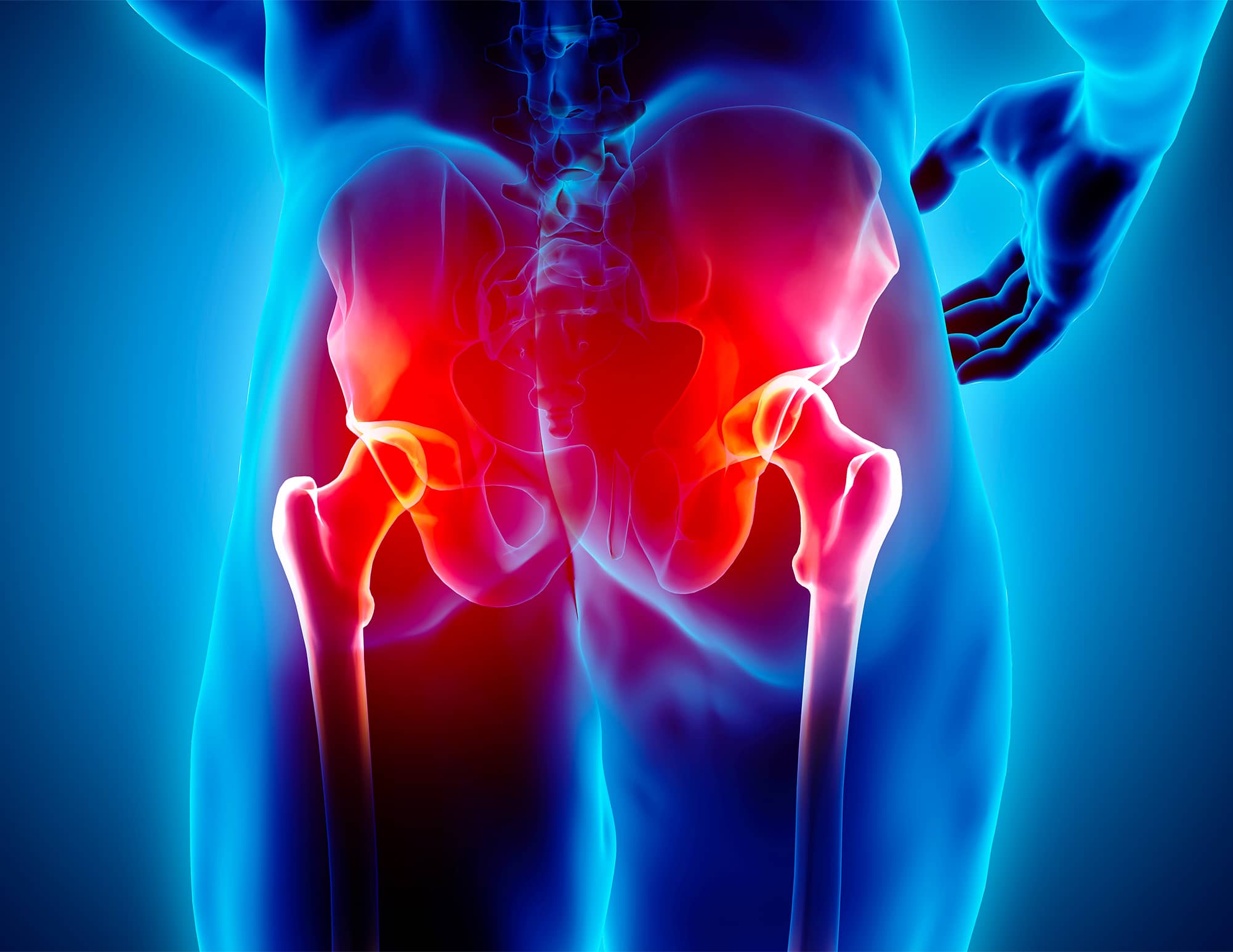Pigmented villonodular synovitis (PVNS)
Pigmented villonodular synovitis (PVNS) is a rare and benign condition. The synovial membrane of the hip joint grows abnormally and pseudotumorously in the joint. This condition predominantly affects young adults. There are two forms of PVNS: a diffuse form and a localized form. The clinical course is generally very slow. Symptoms are often late, causing frequent delays in diagnosis (4 years on average). The diagnosis of PVNS should be considered in the presence of progressive mechanical hip pain in a young patient. Sensations of locking or pseudolocking may also be present.

Diagnosis
Standard radiographs are often normal for a long time. At an advanced stage, it is possible to visualize bone erosions, or bone cysts (holes in the bone). The joint space is preserved for a long time. MRI with gadolinium injection is essential for a good analysis of the pathological synovial membrane and to confirm the diagnosis.
Arthroscopy of the hip typically reveals a major proliferation of the synovial membrane (synovial hypertrophy) of ocher or brown color, often with a characteristic reddish-brown hemorrhagic stippling. A typically ocher nodule with sometimes a suggestive hemorrhagic stippling may also be found in localized PVNS.
Evolution
The natural course of pigmented villonodular synovitis (PVNS) is the slow spread of the synovitis with local bone aggressiveness (erosions and joint geodes). Localized PVNS heals after complete resection, with a very low risk of recurrence. Diffuse PVNS usually recurs after surgery (up to 50% of cases). Recurrences occur mainly in the first four years, justifying MRI follow-up.
Diffuse articular PVNS gradually progresses to joint destruction, which may require the placement of a total hip prosthesis in a young adult.
Treatment
Arthroscopy of the hip is the preferred technique for treating PVNS. Localized PVNS heals after isolated removal of the nodule. The risk of recurrence is minimal if the resection is performed in a healthy area (wide resection of the pedicle). The benefit of complementary synovectomy is not established. In diffuse forms, the synovectomy under arthroscopy must be as complete as possible.
Joint stiffness is often a consequence of surgical treatment. The use of open surgical treatment (open arthrotomy) is sometimes necessary.